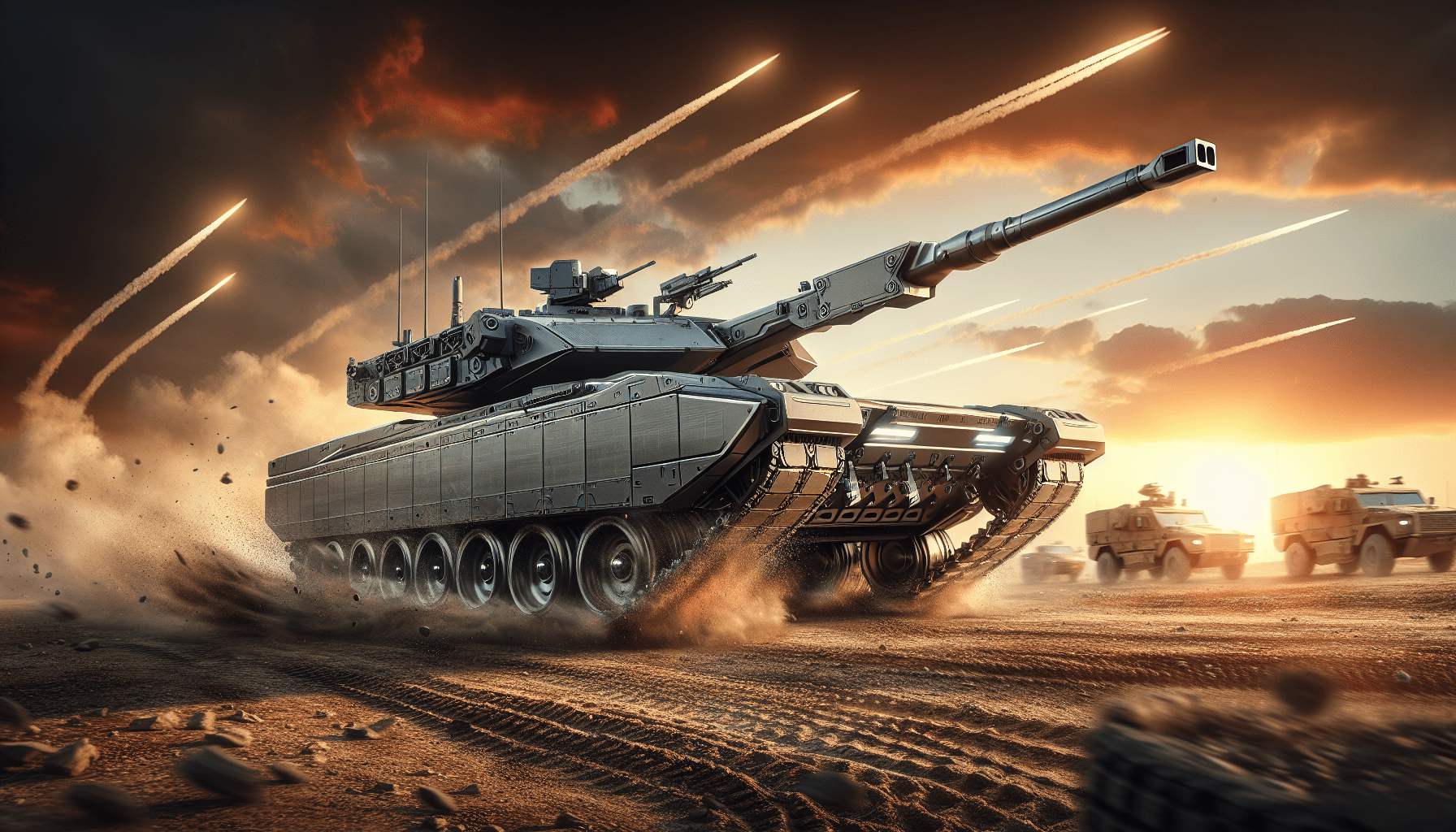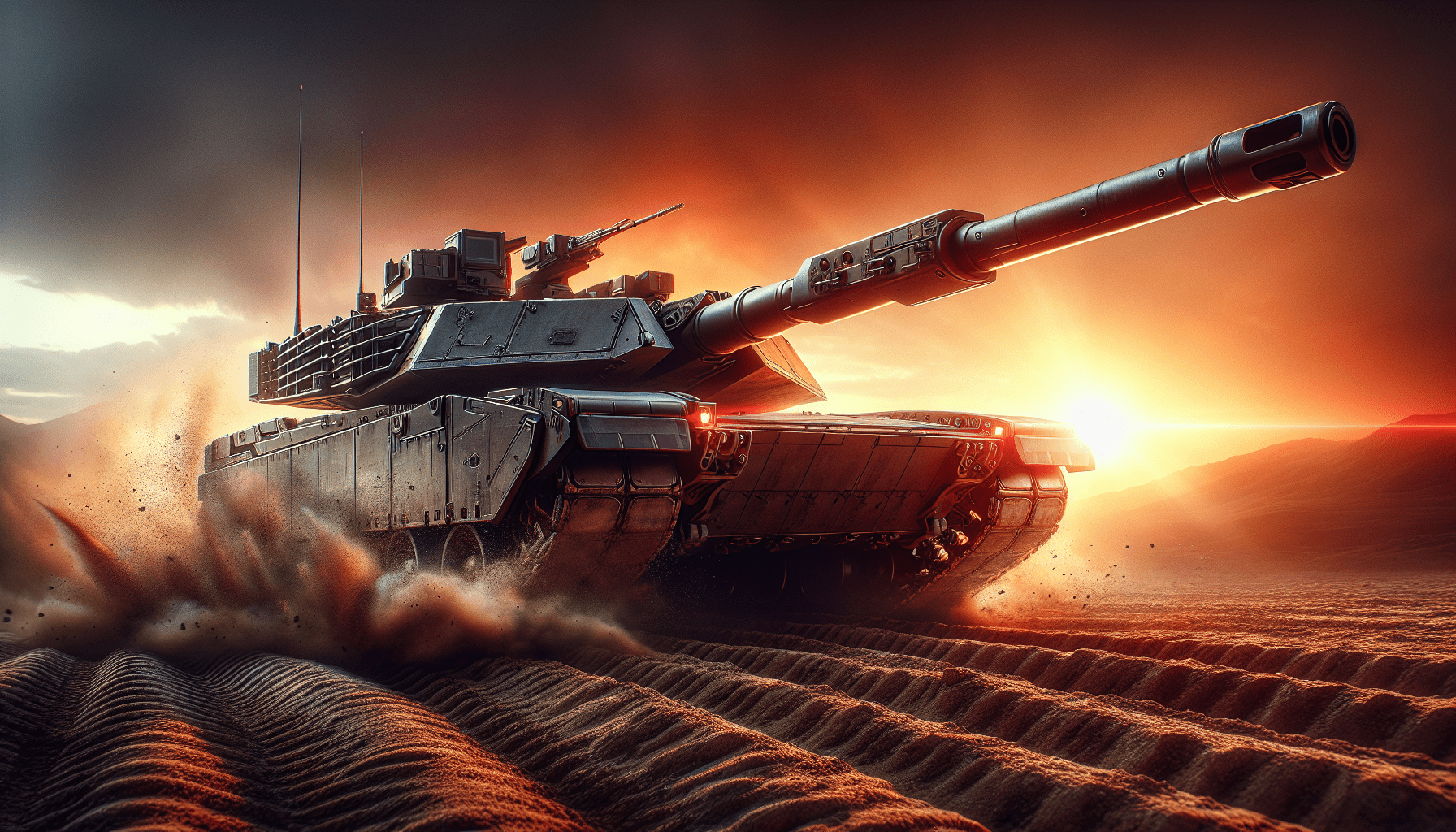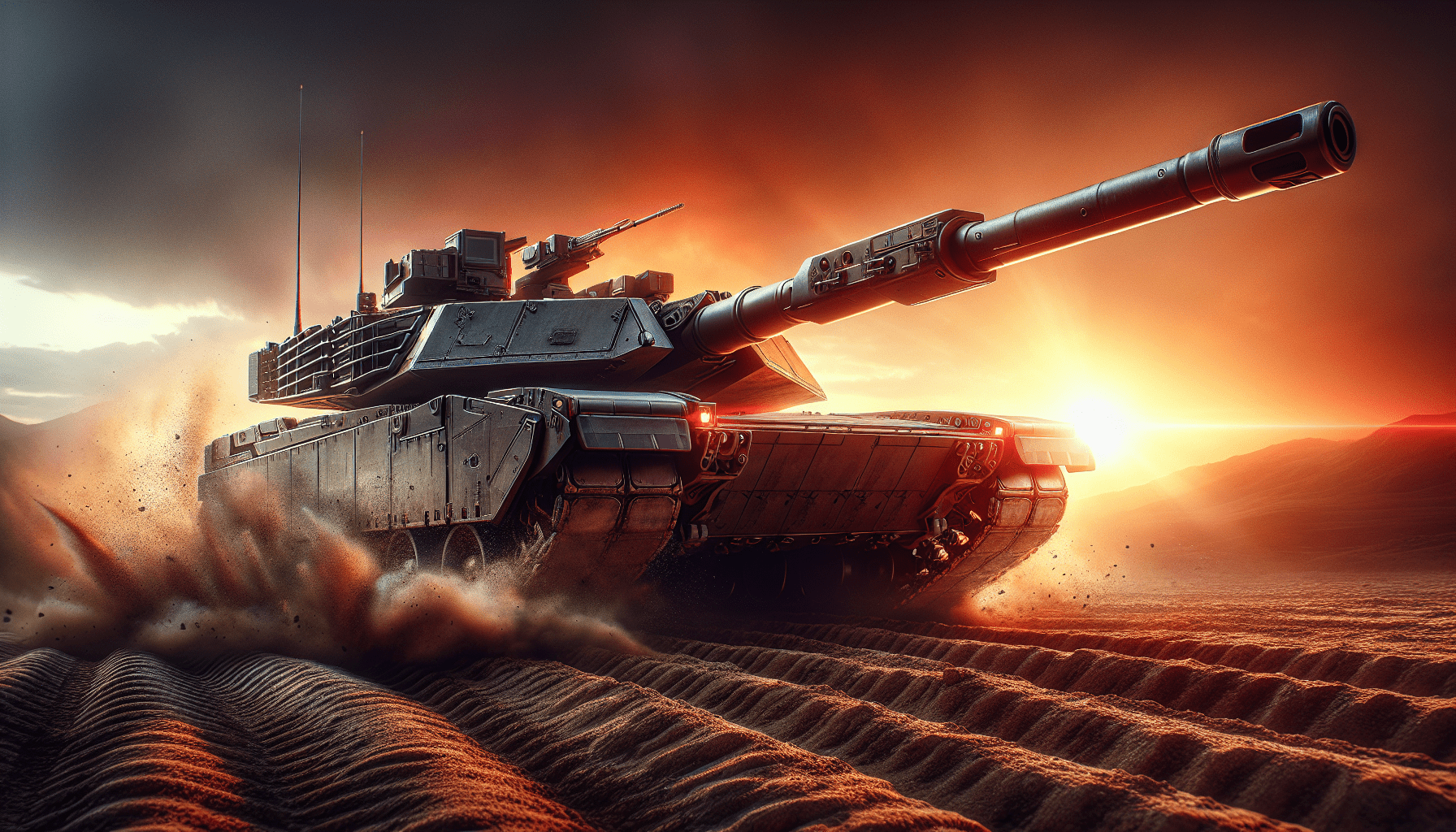The United States Army is embarking on a transformative journey with the introduction of the M1-E3 Abrams Tank, showcasing a series of advanced capabilities that represent a significant departure from traditional tank design. Manufactured in Lima, Ohio, this next-generation battle tank will incorporate an array of state-of-the-art features, including an autoloader, redesigned turret, and hypersonic gun-launched missiles capable of in-flight maneuvering. Additionally, the integration of artificial intelligence systems will enhance combat effectiveness by detecting incoming fire and prioritizing return engagements, while a hybrid electric drive promises improved operational efficiency and a reduction in crew size from four to three.
This article will explore the technological advancements and design philosophy that underlie the M1-E3 Abrams Tank, emphasizing its innovative weaponry and reduced weight of under 60 tons. By examining the implications of these upgrades in light of current battlefield challenges and lessons learned from recent conflicts, the analysis will illuminate how the M1-E3 aims to redefine the role of tank warfare in a rapidly evolving military landscape. The anticipated rollout by the early 2030s signals a new era in armored combat, positioning the U.S. Army as a leader in adapting to contemporary threats.
Overview of the M1-E3 Abrams Tank
Introduction to the M1-E3 Model
The M1-E3 Abrams Tank represents a significant leap forward in modern military vehicle design, showcasing the U.S. Army’s commitment to evolving its armor capabilities. Designed to meet contemporary battlefield demands, the M1-E3 boasts advanced features that not only enhance its offensive and defensive operations but also provide strategic advantages in rapidly changing combat environments. This new model embodies cutting-edge technology and innovative design principles, setting a new standard for main battle tanks (MBTs) globally.
Significance of Advancements in Tank Design
The M1-E3 serves as a testament to the importance of continual innovation in military technology. As warfare becomes more technologically advanced, the need for tanks that can adapt and thrive on the battlefield increases. The enhancements seen in the M1-E3 are not mere upgrades but a reflection of ongoing lessons learned from conflicts such as the War in Ukraine, where traditional tank designs faced unprecedented challenges. Thus, the evolution of the M1-E3 signifies a crucial shift towards more effective and resilient armor capabilities, ultimately influencing future warfare strategies.
Comparison to Previous Abrams Models
The M1-E3 emerges in stark contrast to its predecessors, particularly the M1A2 variant, which, while effective, does not possess the revolutionary features of the new model. Where previous Abrams models relied largely on incremental updates—primarily aimed at enhancing armor, firepower, and electronics—the M1-E3 represents a complete redesign. This new tank integrates multiple innovative elements: a drastic reduction in weight, a shift in crew configuration, and the incorporation of advanced technology such as an autoloader and hypersonic missiles. These changes highlight a commitment to modern warfare needs, blending agility with firepower in ways that previous models could not achieve.
Manufacturing and Production
Location of Manufacturing: Lima Plant in Ohio
The production of the M1-E3 Abrams Tank is centered at the Lima Army Tank Plant located in Ohio, which has a longstanding history of building the Abrams tanks. The Lima facility is essential not only for its manufacturing capabilities but also for its technological advancements in integrating new systems and components into the tank’s design. This strategic location plays a vital role in maintaining quality and ensuring that the manufacturing process can respond swiftly to updates in technology or design specifications.
Expected Production Timelines and Capacity
With the M1-E3 model now entering mass production, the U.S. Army is targeting a rollout timeline aimed at the early 2030s. The production capacity at the Lima plant enables the Army to not only fulfill the immediate needs of its armored divisions but also to maintain a reserve of tanks for future contingencies. This approach allows for a systematic and responsive production pipeline that can facilitate ongoing updates and adaptations to the platform throughout its service life.
Role of Workforce in Implementing New Technologies
The skilled workforce at the Lima plant will be fundamental in the successful integration of innovative technologies into the M1-E3 Abrams. An array of technicians, engineers, and assembly specialists will work collaboratively to ensure the required precision and functionality of complex systems such as the new hybrid drive and advanced targeting sensors. The adoption of new technologies in manufacturing processes emphasizes the importance of a knowledgeable workforce that is not only competent in traditional manufacturing techniques but also adept with cutting-edge systems.
Key Upgrades and Features

Integration of an Autoloader and New Main Gun
Among the most transformative features of the M1-E3 is the integration of an autoloader, which significantly enhances the tank’s fire rate and operational efficiency. This system allows for quicker ammunition loading and reduced risk during combat engagements. Coupled with a new main gun, rumored to be the XM 360 Cannon, the M1-E3 promises exceptional lethal capabilities, outmatching earlier models in terms of both range and accuracy.
Introduction of Hypersonic Gun-Launched Missiles
One of the most groundbreaking features incorporated into the M1-E3 is its ability to fire hypersonic gun-launched missiles. These missiles not only have the capability to maneuver mid-air, thereby increasing their strike potential against mobile targets, but they also transform the operational role of the tank in combat scenarios, enabling it to engage threats effectively from substantial distances while maintaining a degree of tactical standoff.
Enhanced Mobility and Flexibility Through Weight Reduction
A notable characteristic of the M1-E3 is its significant weight reduction, decreasing from 75 tons to below 60 tons. This reduction in weight is crucial for enhancing mobility, allowing the tank to navigate diverse terrains more easily and respond swiftly in combat situations. The lighter design facilitates better operational deployment and increases the range without compromising firepower, echoing a modern approach to armored warfare that prioritizes agility and versatility.
Advanced Masking Capabilities to Reduce Signatures
In the face of advanced enemy detection systems, the M1-E3 features improved masking capabilities, which serve to decrease its thermal and electromagnetic signatures significantly. These advanced features are critical for increasing survival rates in combat as they complicate enemy targeting efforts, thereby enabling the tank to operate more effectively within hostile environments.
Technological Innovations
AI Systems for Threat Detection and Response
The incorporation of artificial intelligence (AI) within the M1-E3 Abrams Tank revolutionizes how threats are detected and responded to. The integrated AI systems are designed to analyze incoming fire, identify potential threats rapidly, and prioritize responses, which significantly enhances the tank’s defensive capabilities. This level of technological integration allows for a more responsive and strategic use of firepower, optimizing the vehicle’s effectiveness in high-pressure scenarios.
Hybrid Electric Drive for Operational Efficiency
The M1-E3 also introduces a hybrid electric drivetrain, which marks a pivotal shift in operational efficiency. This feature not only reduces the reliance on traditional fuel sources but also enhances energy efficiency and allows for silent operations when necessary. The hybrid system supports the advanced electronic systems onboard while improving overall fuel economics, leading to extended operational ranges and more sustainable missions.

Robotic Systems Integration for Enhanced Battlefield Capabilities
As warfare evolves, the integration of robotic systems with manned vehicles has become a focal point for future combat strategies. The M1-E3 is designed to operate alongside advanced robotic units, facilitating coordinated operations. This synergy not only enhances the battlefield capabilities of the Abrams but also allows for innovative tactical formations and enhances situational awareness in complex environments.
Crew Configuration and Safety
Reduction of Crew Size from Four to Three Members
Reflecting a shift in operational philosophy, the M1-E3 Abrams has reduced its crew size from four to three. This change is indicative of advancements in automation and system integration, allowing fewer personnel to manage the same—or even greater—levels of operational complexity. Fewer crew members not only streamline operations but also improve the tank’s survivability by reducing the number of personnel exposed to potential threats.
Redesigning Turret for Improved Crew Safety
To enhance crew safety further, the turret of the M1-E3 has undergone redesign. This new design focuses on integrating protective technologies that safeguard crew members from enemy fire and shrapnel, minimizing vulnerability while maximizing operational efficiency. By addressing crew safety through thoughtful engineering, the M1-E3 sets a benchmark for future armored vehicle configurations.
Potential for Remote or Optionally Manned Operations
The M1-E3 also introduces the potential for remote or optionally manned operations, a forward-thinking concept that aligns with modern military strategies towards autonomy in warfare. This capability not only enhances the safety of tank crews by allowing operations to be conducted remotely, particularly in high-risk scenarios, but also paves the way for autonomous tactical maneuvers in conjunction with manned operations.
Weight Management Strategies
Importance of Weight Reduction for Mobility
In armored warfare, weight management is a crucial factor that impacts mobility, agility, and survivability. The M1-E3’s weight reduction allows for improved maneuverability across diverse terrains and operational scenarios. The ability to traverse more challenging environments effectively enhances strategic deployments and reduces vulnerability during engagements.
Impact on Operational Range and Firepower Balance
The careful calibration of weight in the M1-E3 has significant implications for operational range and firepower. By achieving a weight below 60 tons, the tank can maintain robust firepower without compromising its ability to maneuver and adapt to fast-evolving battlefield dynamics. This balance of power and agility represents a paradigm shift in tank warfare strategy.

Technological Solutions for Achieving Reduced Weight
To achieve this critical weight reduction, the M1-E3 employs advanced materials and manufacturing techniques. These technological solutions include the use of composite materials and innovative engineering processes that enhance structural integrity while minimizing weight. By integrating these design principles, the M1-E3 can sustain its performance without becoming encumbered by excessive mass.
Historical Context of Tank Design
Evolution of Abrams Models Over Decades
The evolution of Abrams models reflects a broader transformation in military technology over the decades. From the introduction of the original M1 model in the early 1980s to today’s advanced M1-E3, the lineage of innovation captures the U.S. Army’s responses to emerging threats and shifts in warfare paradigm. Each iteration has aimed to incorporate lessons learned from past conflicts, continuously refining the capabilities and performance of the tank on the battlefield.
Lessons Learned from Conflicts, Particularly the War in Ukraine
Recent conflicts, notably the War in Ukraine, have provided pivotal lessons in armored warfare. The high-stakes environment of modern combat has emphasized the vulnerabilities of traditional tank designs and underscored the urgent need for adaptability. The M1-E3 model intentionally reflects these lessons, with features designed to enhance resilience against particular threats encountered in recent engagements.
Shift from Modifications to Complete Redesign
Historically, improvements to tank designs have often been achieved through modifications rather than complete overhauls. However, the M1-E3 signifies a paradigm shift towards comprehensive redesigns that address contemporary battlefield requirements. This approach acknowledges that the future of armored warfare demands more than incremental changes; it necessitates fundamentally new designs that incorporate advanced technologies from the outset.
Firepower Enhancements
Development of New XM 360 Cannon
At the heart of the M1-E3’s formidable firepower is the new XM 360 Cannon, which promises to enhance both accuracy and range. This development represents a significant iteration beyond traditional cannon systems, integrating advanced technology that allows for greater projectile velocity and precision. The XM 360’s innovative design positions the M1-E3 as a dominant force on the battlefield.
Integration of Gun-Launched Anti-Tank Guided Missiles
The M1-E3’s firepower is further strengthened by the potential integration of gun-launched anti-tank guided missiles (ATGMs). Unlike previous models, the ability to launch ATGMs directly from the tank’s cannon provides a strategic advantage, allowing it to engage enemy armor at longer distances with increased accuracy. This capability is anticipated to fulfill a critical role in countering modern armored threats effectively.
Improved Accuracy and Range of Firepower
Overall, the enhancements in the M1-E3’s firepower, underscored by the introduction of advanced cannon technology and guided munitions, position this tank at the forefront of modern battlefield capabilities. Its improved accuracy and operational range allow for effective engagement of diverse enemy threats, ultimately enhancing the efficacy of ground forces in complex combat scenarios.
Technological Integration for Modern Warfare
Advanced Sensor Systems for Situational Awareness
The integration of advanced sensor systems is paramount for the M1-E3’s operational effectiveness in modern warfare. These systems provide real-time situational awareness, enabling the crew to assess threats and make tactical decisions rapidly. With enhanced sensors, the M1-E3 can operate more effectively in coordination with other military assets, fostering integrated operations on the battlefield.
Protection Against Evolving Threats, Such as Drones
As warfare evolves, so do the threats faced by armored units. The M1-E3’s design incorporates protective measures against contemporary risks, including aerial threats posed by drones. Enhanced electronic warfare capabilities and active protection systems serve to mitigate these threats, ensuring that the Abrams can maintain operational integrity in environments where air superiority is contested.
Preparing the Battlefield for Combined Manned/Unmanned Operations
The future battlefield will likely see increasingly integrated manned and unmanned operations. The M1-E3 is designed to operate effectively in conjunction with unmanned systems, allowing it to adapt to emerging combat roles. This capability ensures that the U.S. Army is preparing its armored units to thrive in the complexity of future engagements, where flexibility and cooperative tactics will be essential.
Conclusion
Summary of the M1-E3 Abrams Tank’s Advancements
In summary, the M1-E3 Abrams Tank epitomizes substantial advancements in design, technology, and operational strategy in modern armored warfare. With its integration of cutting-edge weaponry, advanced mobility, and enhanced crew safety features, the M1-E3 sets a new benchmark for future land combat capabilities.
Long-Term Implications for Tank Design and Warfare
The implications of the M1-E3 extend well beyond its immediate modernizations; they signify a long-term vision for tank design reflective of shifting combat paradigms. The push towards advanced automation, lightweight materials, and strategic versatility heralds a new era in armored warfare that challenges traditional doctrines and operational constructs.
Final Thoughts on the Evolution of Military Technology
The evolution of military technology, exemplified by the M1-E3 Abrams, exemplifies the necessity for armed forces to remain adaptable and innovative in the face of emerging threats. As the landscape of warfare continues to evolve, it is imperative that military technologies embrace transformative advancements, ensuring that they effectively respond to the dynamics of modern conflict while protecting lives and enhancing operational effectiveness.
